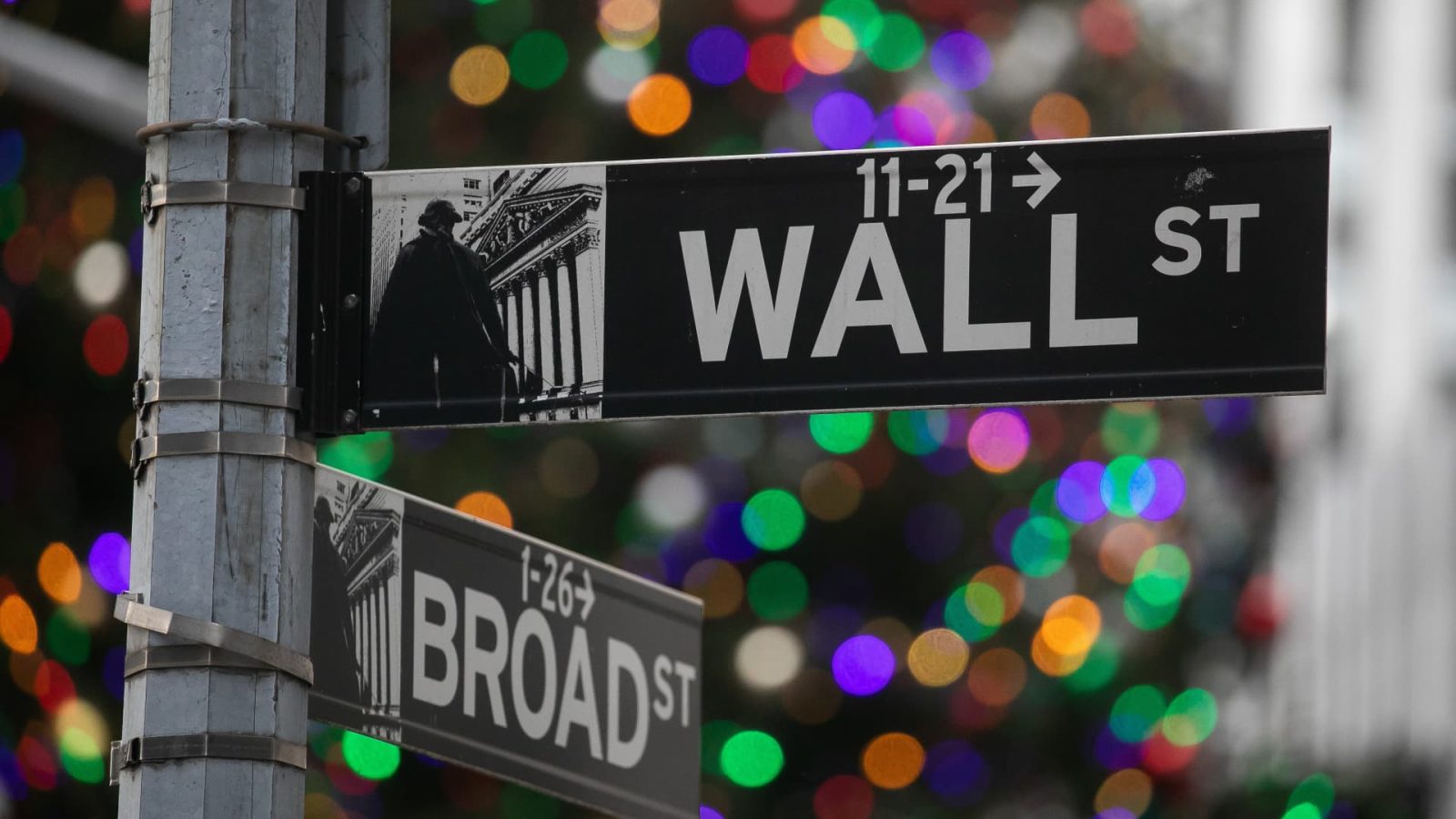Here’s our Club Mailbag email investingclubmailbag@cnbc.com — so you send your questions directly to Jim Cramer and his team of analysts. We can’t offer personal investing advice. We will only consider more general questions about the investment process or stocks in the portfolio or related industries. What’s the difference between the Oscillator and fair value for the market? Also, where can I access data on S & P 500’s operating earnings estimates and what is the range of earnings multiple you recommend? I’ve noticed that CNBC analyst guests mention a range from 16 to 22 times, but I find this range a bit wide. Best wishes, Vivian J. Great questions. Let’s start with the first one and differentiate between overbought and overvalued and oversold or undervalued. Overbought and oversold The S & P Short Range Oscillator , which Jim Cramer has used for decades dating back to his Wall Street days, is what’s known as a momentum indicator. It does not account for the valuation of the S & P 500, only the speed and magnitude of a market move in a given direction. When stocks move up quickly, the Oscillator increases, with a 4% and above reading signaling an overbought condition. A minus 4% and below indicates oversold conditions. Zero is neutral and a move up toward 4% or down toward minus 4% provides an idea of where the market is leaning. Get the Oscillator Every time we mention the Oscillator, we’re flooded with requests from Club members: “How can we access?” Well, we went directly to the source, our partners at MarketEdge, the data provider that publishes the Oscillator. We’re excited to share that Club members can now get an exclusive discount for this helpful tool. Click here . For individual stocks, traders often look at the Relative Strength Indicator, which is also a momentum gauge. For this tool, 70 is the threshold at which a stock is considered overbought, while 30 is the downside threshold used to indicate an oversold condition. Last month, we answered another mailbag question and delved deeper into technical analysis . Importantly, though, these are strictly technical analysis-oriented tools. They have nothing to do with valuation. To determine whether an index such as the S & P 500 or an individual stock is overvalued or undervalued requires an analysis of the price-to-earnings (P/E) valuation multiple. In the past, we have discussed how to think about appropriate multiples . Overvalued and undervalued That brings us to the second question about data sources for S & P 500 earnings estimates. We use LSEG, formerly known as Refinitiv, and FactSet – both of which are paid services. However, your brokerage firm should be able to offer up some resources if you reach out or a Google search for “S & P 500 estimates” should also provide some useful information on forward estimates. Just keep in mind, that estimates vary so you’ll want to check out a few credible sources. That said, at the time of this writing, FactSet put the consensus on the next 12 months of earnings estimates at about $245 for the S & P 500 in aggregate. As for the appropriate multiple, we certainly understand the frustration with the wide range often cited by market strategists on CNBC and other financial media outlets. But it’s important to remember the multiple alone doesn’t tell the full story. It may be higher because the market is indeed expensive, or because investors think the earnings estimates are too low and need to come. The opposite could be also true. The multiple may look low because the market really is cheap, or because investors think the estimates are too high and need to come down. That’s why we can’t look at the valuation in vacuum and need to do our analysis and ask ourselves if the estimates make sense given our worldview. The idea of having a worldview through which investors can consider your risk tolerance is something Jim learned when he was just starting out and continues to live by today. Now, regarding the 16 to 22 times range you mention for the S & P 500, it is a wide one, however, we would note that the upper end does include levels reached during Covid and the time period shortly after. So, we need to consider that earnings in 2020 and much off 2021 were largely being overlooked as investors were looking for stocks that would prove cheap once earnings normalized. Put another way, the multiple got very high because investors weren’t really concerning themselves with 12-month forward estimates, they were more so thinking about the pre-pandemic 2019 level of earnings and which companies could get back to those levels the fastest. Here’s a chart from FactSet that looks back at the forward earnings-based valuation of the S & P 500 over the past 20 years. S & P 500 forward P/E over 20 years The two extremes to note are 2008 and 2009 (the Great Financial Crisis or GFC) and the years following, as well as the 2020 and 2021 Covid years. Outside of those two periods, we think you’re probably looking at a more normalized range in, the call it, the 15.5 to 18.5 times range for the index, with an average of about 15.8 times over that timeframe. Over the past 10 years, not including the GFC, the range is more like 16 times to 19 times for the S & P 500, with an average of 17.8 times. S & P 500 forward P/E over 10 years As you can see in this second chart, we are indeed at the high end of the range but not to an alarming degree. As stock pickers, we have the luxury of not worrying to much about the aggregate earnings of an index like the S & P 500 because we can focus more on our own individual investments. In other words, don’t expect us to be buying or selling based on the valuation of the S & P 500, though we certainly take the Oscillator into account, and we’ve explained recently how we use it to help us manage cash levels. Our discipline dictates selling some shares in overbought markets and buying some in oversold markets. Another way to look at things is to factor in growth. For that, we turn to the forward P/E to growth ratio (PEG), which takes the multiple and normalizes for growth rates. S & P 500 forward PEG over 10 years Looking at the third chart above, what we find is that on a forward-looking PEG basis, the valuation of the market as measured by the S & P 500 index really isn’t that stretched – assuming of course that the earnings estimates materialize as projected or exceed expectations. Bottom line While trading at the upper end of the S & P 500 index valuation range, that does not rule out further gains in the market. Using our 10-year range of about 16 to 19 times current forward S & P 500 earnings estimates of $275 in 2025 puts the market at a year-end target of between 4,400 (assuming we reach 16 times 2025 estimates in December of 2024, about 4% lower than here) and 5,225 (assuming we reach 19 times 2025 estimates in December of 2024, about 14% higher), with the 17.8 times average getting us to 4,895 (about 6.5% above where we are now). Forward earnings key Remember, this is about forward earnings, meaning that come December 2024, we will be looking ahead to 2025 estimates. At the moment, if we’ve learned anything these past few years, it’s that a year in equities can be an eternity and estimates can change quickly. Year-end 2025 estimates stand at about $275. Again, a lot can happen between now and the end of the year at the level. However, as mentioned earlier, we have the luxury of concerning ourselves with the performance of individual companies, rather than the overall market, which is made up of some great companies, mostly average ones, and some awful ones. That’s exactly how we like it. If anything, we think 2024 is setting up to be a true stock pickers market in which those willing to do the homework that Jim recommends are greatly rewarded. We also think it will be a year in which diversification is rewarded. The S & P 500 is arguably at fair value at the moment given the multiples we noted above. However, it’s important to remember that the mega-caps have driven much of the gains this year. The market cap-weighted S & P 500 index has gained nearly 20% year-to-date whereas the equal-weight version has increased just under 6% for the year. S & P 500 equal weight P/E over 10 years As we can, on an equal-weight basis, the index, at 15.26 times is trading below its 10-year average of 16.36 times, indicating to us that there are definitely opportunities out there, outside of the Magnificent Seven that dominated 2023. (See here for a full list of the stocks IN Jim Cramer’s Charitable Trust.) As a subscriber to the CNBC Investing Club with Jim Cramer, you will receive a trade alert before Jim makes a trade. Jim waits 45 minutes after sending a trade alert before buying or selling a stock in his charitable trust’s portfolio. If Jim has talked about a stock on CNBC TV, he waits 72 hours after issuing the trade alert before executing the trade. THE ABOVE INVESTING CLUB INFORMATION IS SUBJECT TO OUR TERMS AND CONDITIONS AND PRIVACY POLICY , TOGETHER WITH OUR DISCLAIMER . NO FIDUCIARY OBLIGATION OR DUTY EXISTS, OR IS CREATED, BY VIRTUE OF YOUR RECEIPT OF ANY INFORMATION PROVIDED IN CONNECTION WITH THE INVESTING CLUB. NO SPECIFIC OUTCOME OR PROFIT IS GUARANTEED.
Here’s our Club Mailbag email investingclubmailbag@cnbc.com — so you send your questions directly to Jim Cramer and his team of analysts. We can’t offer personal investing advice. We will only consider more general questions about the investment process or stocks in the portfolio or related industries.
What’s the difference between the Oscillator and fair value for the market? Also, where can I access data on S&P 500’s operating earnings estimates and what is the range of earnings multiple you recommend? I’ve noticed that CNBC analyst guests mention a range from 16 to 22 times, but I find this range a bit wide. Best wishes, Vivian J.
Read the full article here









Leave a Reply